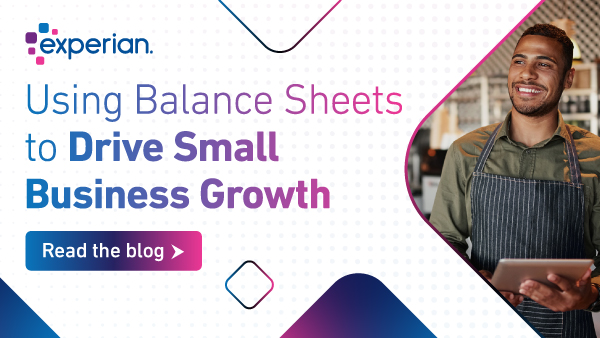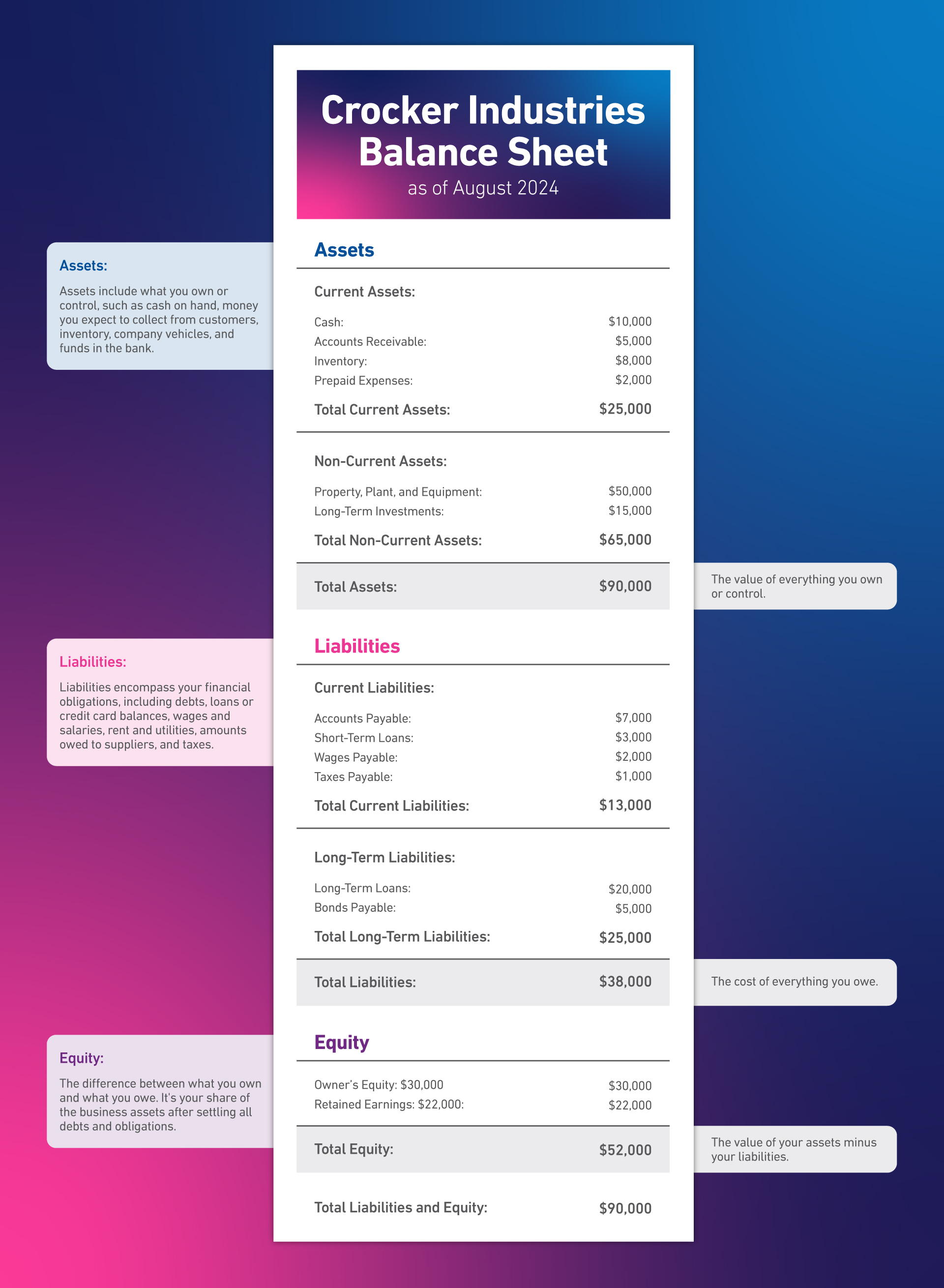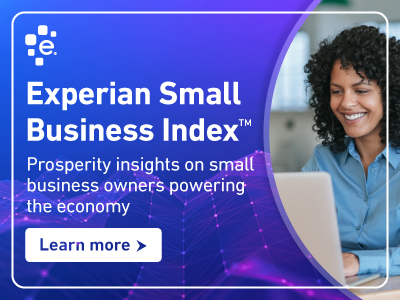In this article…

In the realm of business accounting, the humble balance sheet is what business owners can check to get a moment-in-time snapshot of their business’s financial status. Regularly consulting the balance sheet ensures the business owner stays informed about the business’s financial status and can make informed, strategic decisions.
Financial coach Tina Edel from Picture It Profit & Financials says, “People often say to focus on the Profit and Loss Report because you want to know if you’re making money. However, this is only part of the picture. The Profit and Loss won’t tell you about the money used to start your business – such as an owner’s investment or initial loan. It also won’t tell you about payments made to reduce debt, like payments for a company vehicle or amounts you pay yourself as an owner. This can be found on the Balance Sheet.
Setting up your bookkeeping and balance sheet
Setting up bookkeeping software from the beginning makes it much easier to keep your books current. Many affordable options, such as QuickBooks, FreshBooks, and Xero, offer preformatted balance sheets to simplify the process.
When to use a balance sheet
Let’s begin by discussing when to review your business balance sheet. A business owner should look at a balance sheet for their business during several key times:
Regular Financial Reviews: Monthly or quarterly reviews to track the financial health and performance of the business.
- Annual Financial Reporting: At the end of each fiscal year, prepare annual reports and tax filings.
- Before Major Financial Decisions: When considering significant investments, loans, or financial commitments, ensure the business can support these actions.
- During Financial Audits: Internal or external audits verify the accuracy and completeness of financial records.
- When Seeking Financing: Before applying for loans or attracting investors, lenders and investors will scrutinize the balance sheet.
- In Case of Financial Troubles: When the business faces cash flow issues, unexpected expenses, or declining profits, identify and address problems.
- Planning for Expansion: Prior to expanding the business, hiring additional staff, or launching new products, evaluate the financial capability to support growth.
- Monitoring Financial Goals: To track progress toward financial goals and adjust strategies as needed.
What is a balance sheet, and how do we know it is balanced?
To describe it, imagine a scale with two sides. On one side, you place all the items you own or control (assets), and on the other side, you put all your financial obligations (liabilities) and what’s left over for the owners (equity). For the scale to be balanced, the total weight of assets on one side must equal the combined weight of liabilities and equity on the other. This balance ensures that the business’s financial position is accurately represented. A balance sheet is essentially a detailed financial statement that outlines a company’s assets, liabilities, and equity at a specific point in time. Tina Edel puts it simply: “A Balance Sheet is the net worth of your business.”
Let’s familiarize ourselves with the balance sheet’s primary components:
Assets:
There are two categories of assets:
- Current Assets: cash, accounts receivable, inventory and prepaid expenses
Current assets can be converted into cash within a fiscal year.
- Non-Current Assets: property, plant, and equipment (PP&E), long-term investments, and intangible assets such as patents and trademarks.
Non-current assets are assets that will be used for more than a year.
Liabilities:
Liabilities are what the business owes to others. They are also divided into two categories:
- Current Liabilities: accounts payable, short-term loans, wages payable, and taxes payable.
These are obligations the business must pay within a year.
- Long-Term Liabilities: mortgages, long-term loans, bonds payable, deferred tax liabilities.
Equity:
Equity represents the owner’s claim after all liabilities have been paid off. Equity can include:
- Owner’s Equity: Initial and additional investments made by the owner(s).
- Retained Earnings: Profits that have been reinvested in the business rather than distributed to the owners as dividends.
Suppose we look at the above balance sheet for Crocker Industries. The total assets of $90,000 equals the total liabilities and equity of $90,000 for the company, confirming that the balance sheet is balanced. If we were making plans to grow, for example, having a balanced sheet would instill confidence, which we would likely exude if we sat down with our bank to discuss our plans. Conversely, if there were areas of our finances that were out of balance, we could be proactive in addressing any potential problems.

The Importance of Balance Sheets in Business Decision Making
Business owners need balance sheets to assess financial stability and operational efficiency. Tina Edel emphasizes the importance of proper bookkeeping from the start: “The IRS insists that you keep track of where your business money comes from and how you use it. To stay compliant with record keeping, do yourself the favor of setting up bookkeeping software from the start. It is much easier to set up books correctly and keep them current than to have to catch up at the end of your first year of business.” Here’s how balance sheets help:
Assessing Financial Stability
- Liquidity Analysis
- Current Ratio: By comparing current assets to current liabilities, business owners can determine if they have enough short-term assets to cover short-term obligations. A current ratio (current assets / current liabilities) greater than 1 indicates good liquidity.
- Quick Ratio: This ratio excludes inventory from current assets and provides a stricter measure of liquidity. It helps assess the ability to meet short-term liabilities without relying on inventory sales.
- Debt Management
- Debt-to-Equity Ratio: This ratio (total liabilities / total equity) shows the proportion of debt used to finance the company’s assets relative to the value of owners’ equity. A high ratio may indicate excessive reliance on debt, which can be risky.
- Interest Coverage Ratio: Calculated by dividing earnings before interest and taxes (EBIT) by interest expenses, this ratio shows the company’s ability to pay interest on outstanding debt.
- Asset Management
- Asset Turnover Ratio: This ratio (net sales / average total assets) indicates how efficiently a company uses its assets to generate sales. A higher ratio suggests better asset utilization.
- Return on Assets (ROA): This measures profitability relative to total assets (net income / total assets), providing insight into how effectively assets are used to generate profit.
Assessing Operational Efficiency
- Inventory Management
- Inventory Turnover Ratio: This ratio (cost of goods sold / average inventory) shows how often inventory is sold and replaced. High turnover indicates efficient inventory management, while low turnover may suggest overstocking or obsolescence.
- Accounts Receivable Management
- Days Sales Outstanding (DSO): This metric (accounts receivable/total credit sales) × 365) shows the average number of days it takes to collect payment after a sale. Lower DSO indicates efficient collection processes, improving cash flow.
- Accounts Payable Management
- Days Payable Outstanding (DPO): This metric (accounts payable / cost of goods sold) × 365) shows the average number of days it takes to pay suppliers. Longer DPO can indicate better cash management, but excessively long periods might strain supplier relationships.
Assessing Operational Efficiency
- Inventory Management
- Inventory Turnover Ratio: This ratio (cost of goods sold / average inventory) shows how often inventory is sold and replaced. High turnover indicates efficient inventory management, while low turnover may suggest overstocking or obsolescence.
- Accounts Receivable Management
- Days Sales Outstanding (DSO): This metric (accounts receivable/total credit sales) × 365) shows the average number of days it takes to collect payment after a sale. Lower DSO indicates efficient collection processes, improving cash flow.
- Accounts Payable Management
- Days Payable Outstanding (DPO): This metric (accounts payable / cost of goods sold) × 365) shows the average number of days it takes to pay suppliers. Longer DPO can indicate better cash management, but excessively long periods might strain supplier relationships.
Strategic Decision Making
- Investment Decisions
- Balance sheets help determine if the business has the financial strength to invest in new projects, equipment, or expansions.
- Financing Decisions
- Understanding the current financial position helps decide whether to raise funds through debt or equity and the terms that would be most favorable.
- Risk Management
- By regularly reviewing balance sheets, business owners can identify potential financial risks early and take corrective actions to mitigate them.
- Benchmarking and Goal Setting
- Comparing balance sheet metrics with industry standards or historical data helps set realistic financial goals and track progress over time.
Common Mistakes to Avoid with Balance Sheets
When reading a balance sheet, there are several common mistakes that business owners should avoid to ensure an accurate assessment of their financial health. One frequent error is overlooking liabilities, like ignoring a small leak in a dam – it might seem insignificant now but can cause significant problems over time. Misclassifying assets and liabilities, such as listing long-term assets as current assets, is like packing your carry-on luggage with items meant for checked baggage, leading to confusion and potential issues and failing to account for depreciation results in an inflated asset value, like valuing your car at its purchase price without considering its wear and tear over the years. Using an outdated balance sheet won’t help you navigate current conditions or detours – as if you are relying on an old map for a road trip. Buckle up.
Another mistake is overvaluing intangible assets like goodwill or intellectual property without realistic valuation, akin to estimating the value of a recipe based on its taste alone, without considering the cost of ingredients or the effort required to make it. Ignoring off-balance sheet items, such as contingent liabilities, is like ignoring the submerged part of an iceberg – what’s beneath the surface can have a significant impact. Failing to reconcile the balance sheet with other financial statements, such as the income and cash flow statements, is like reading a novel and ignoring key chapters – you won’t get the whole story.
Regular reviews of aged items and static balances are essential to ensure that amounts are appropriately recognized or released. These items can represent potential misstatements on the P&L, such as when a provision is established for severance, but the severance payment is recorded directly as an expense in a later period, resulting in double counting.
Neglecting changes in owner’s equity, such as additional investments or dividends paid out, is similar to tracking your fitness progress without noting diet and exercise routine changes. Finally, misinterpreting financial ratios and metrics can lead to incorrect conclusions, much like misreading a recipe’s measurements—even small errors can lead to a flawed outcome. By avoiding these common mistakes and using metaphors to understand the underlying concepts, business owners can gain a clearer, more accurate picture of their financial situation.
Critical takeaways for rocking your balance sheet
Understanding and effectively utilizing balance sheets is crucial for small business success. A balance sheet provides a comprehensive snapshot of your business’s financial health, helping you make informed decisions, manage debts, and optimize asset usage. Regularly reviewing your balance sheet can reveal trends, identify potential issues, and ensure you maintain a balanced financial state. Additionally, consulting with financial advisors can offer expert insights and tailored strategies to enhance your financial management.
Consider exploring additional resources and tools to deepen your understanding and improve your financial practices. Free online courses, financial management software, and balance sheet templates can provide valuable support. By staying informed and proactive, you can navigate the complexities of business finance and steer your company toward sustained success.
